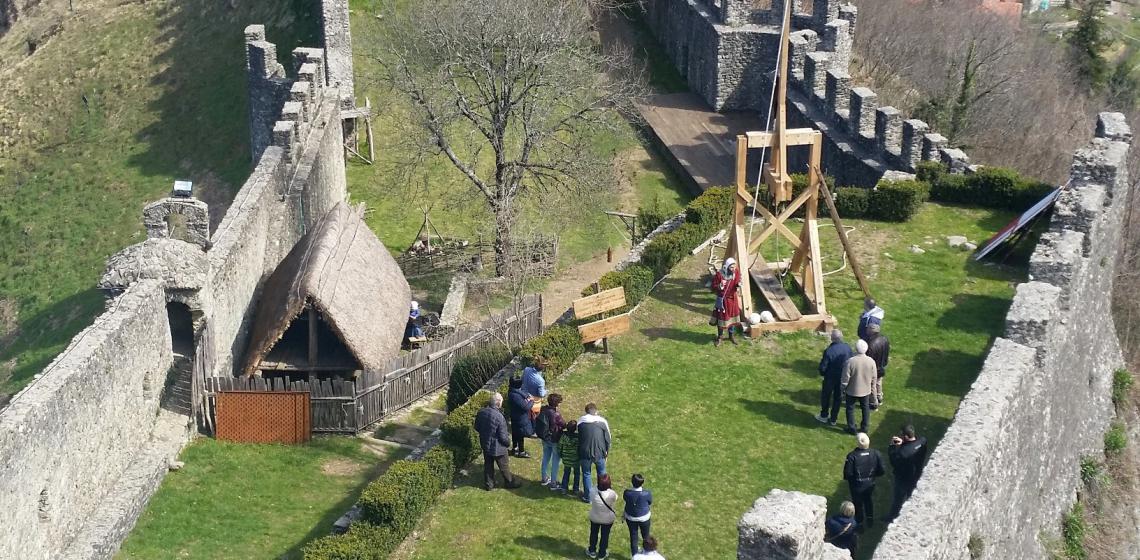
The Fortress of Verrucole dates back to the 10th century. It was constructed by the Gherardinghi family on a previous human settlement. Because of the expansionist aims of Lucca northwards, many battles took place here such as a long siege during the winter 1170.
The Fortress fell into the hands of Lucca in 1296. When the maximum splendor of Castruccio Castracani declined, Spinetta Malaspina seized the control of the Fortress until 1345. Part of the Garfagnana region came under the Este family’s rule in 1429. The present structure of the Fortress dates probably back to two Estense’s periods: the period of the Marquis Leonello (around 1450) and Alfonso II (around 1564). Between 1522 and 1525, the poet Ludovico Ariosto was commissioner of Garfagnana. He reinforced the military districts, such as the Fortress of Verrucole. In the second half of the 16th century, the Duke Alfonso II d’Este called the Architect Marc Antonio Pasi to make the Fortress more suitable for the new war requirements. In those centuries, the fortress lost its military and strategic function but its structure was maintained in perfect working order by ducal engineers. In 1986, the Municipality of San Romano in Garfagnana bought the fortress and started the twenty-year restoration, which finished in 2012.
Project Archeopark Fortress of Verrucole
The Fortress of Verrucole soars at the heart of the northern part of Garfagnana because its aim was to control this land. The structure has medieval origins. It was strengthened during the Renaissance and has inhabited until the most recent centuries. The association MHL, made up of experts on historical research and educational divulgation, creates from 2013 a Medieval Archeopark to reproduce the living conditions of the human settlement from the end of 13th century (based on the Statuto of 1271 of the Verrucole Gherardenga, as the place was called in that moment). Its aim is to retrieve the ancient everyday life thanks to the interactivity of the guided tours; so the Fortress has became something new: an interesting attraction from the architectural and historical point of view together with guides who re-enact the aspects of past life conditions. The fortress revives thanks to the organisation of civil and military environments and the recovery of the vegetable garden such as the herb garden “Il Giardino dei Semplici” which was useful for the medieval herbal medicine. Important part of the museum activity are the workshops/educational activities (for adults and kids) to involve them in a practical experience of the 13th century life about different themes civil (weaving, cooking, writing & miniature, medicine, ancient building techniques) and military (war strategies, archery, military training games). Keywords: to captivate the attention, to convey a documented knowledge without boring or numbing visitors with dates or pompous words.
